|
The Barbarians
by Tim Newark Published in 1985 160 Pages Thibault’s Score: 2/5 This book is a 1980s Middle School textbook about the barbarian kingdoms that preceded the fall of the Roman Empire. I didn’t really enjoy it for several reasons, although I did finish it. Barbarians is a non-systematic overview of seemingly randomly selected groups. The descriptions of each groups are all cursory, and rely on historical stereotypes rather than facts. No words of caution are given regarding the authenticity of the sources. The fact that this passes for a history textbook is a clear sign of the decaying educational system. I read several other Middle School history textbooks from the 19th century which I reviewed elsewhere on this blog, and the level of the discourse has significantly decayed. Writing a book about “Huns, Arabs, Vikings, and Mongols” is a bit absurd as these groups are unrelated. When children aren’t presented with a clear narrative of history, it gnaws at their ability to create a logical sequence of events that they can understand. What makes it more of a shame is that the writing style is decent. Sentences are clear, and there isn’t a lot of superfluous text. The quality of the writing is good, but the content is bad.
0 Comments
Barbarians within the Gates of Rome
by Thomas S Burns Published in March 1995 442 Pages Thibault’s Score: 4/5 This book describes itself as “A Study of Roman Military Policy and the Barbarians CA 375-425 AD.” That description is aft. This is one of the best Roman history books that I have read in a very long time. Barbarians within the Gates is a chronological study of extant sources and archeological information of the period after the Battle of Adrianople where the Roman Empire begin letting in massive amounts of barbarians. He explores the reasons why large populations of barbarians were granted political autonomy and even kingship within the territory of the Roman Empire. The quality of the historiography is very high. The time period being covered is well-defined and specific. Thomas S Burns cites all of the sources he used, and makes a point of extensively analyzing their respective merits and flaws. He also cites the archeological evidence that he uses. I also enjoyed the writing style. It was very clear and descriptive. Sentences were succinct and informative. Just the right amount of details were repeated to make following along easy, without making the book tedious and boring. This book is fairly difficult, and I don’t recommend it to people who aren’t already familiar with the history of the late Roman Empire. I strongly recommend this book to anyone interested in delving deeply into the reasons for the decline and fall of the Roman Empire. Pagans: The End of Traditional Religion and the Rise of Christianity
by James J. O’Donnell Published in January 2013 288 Pages Thibault’s Score: 3/5 This book covers the process by which paganism disappeared from Europe and evolved into Christianity from the time of Augustus into the early Middle Ages. I found the book to be very interested, and hearing the story from the perspective of the pagans was different. This book is written clearly and simply, it is not an academic treatise, and has something to offer to both history experts and novices alike. The writing style is descriptive, but remains clear and non-superfluous. There are numerous great descriptions, quoted from various ancient sources, of the ancient pagan rituals. I learned a lot about everything from animal blood sacrifices to astrology. There are also many great anecdotes, illustrating how the gods of one pagan religion would be adopted into other pagan religions. I also like that he makes it very clear that nobody would have called themselves “pagan.” Pagans in Egypt, Gaul, and Italy wouldn’t have viewed themselves as being part of the same religion. The collectivist term “pagan” was used by later Christians to make the distinction between the followers of Abrahamic religions and the polytheistic religions that came before. Paganism is related to “peasant,” because paganism subsided longer in the rural areas, and was used as an insult by the Christian urbanites. I thought that O’Donnell did fall short in a few areas. His insistence on repeatedly attempting to “debunk” the Christian version of the conversion story was a bit annoying. I also wished that he would have given more coverage to non-Christian religions that survived elsewhere in Europe, such as Eastern Europe and Norway, well into the late Middle Ages. Certain, relatively minor, things about O’Donnell’s writing style also irked me. Early in the book, he gives an analogy written in the second person where he instructs the reader to imagine that they are taking a tour through Rome. He does this in several other passages. This book is a solid introduction to the topics surrounding the conversion of pagan Romans to Christianity, and I recommend it to people trying to learn this topic. I’m sure that its not the best book written about the topic, but its the best that I’ve read so far. Barbarian Tides: The Migration Age and the Later Roman Empire
by Walter Goffart Published in December 2009 384 Pages Thibault’s Score: 2/5 This book should be called “1000 Reason Why there is no Germany.” The central thesis of this book is that “Germany” is a historical social construct, and that the barbarian tribes in the Roman Empire weren’t unified. I was hoping that the book would serve as a chronological account and draw extensively on archeology. Instead, this book is an academic critique of Walter Goffart’s rivals. The writing style is extremely repetitive. There is no need to say that “Germany is a social construct” 23 times in a single chapter. I also got a vague sense that there was something petty about the writing style - for example, he makes condescending statements alluding that his academic rivals think like people from the Middle Ages. I agree with Walter Goffart’s central argument that there isn’t a distinctly “German” common ancestry dating back to the Roman era shared by modern day Germans, but can’t stand the book’s writing style. After getting about 1/4 of the way through, I decided to put the book down, and quit wasting my time. This book reminds me of “Tales of the Barbarians.” On Killing: The Psychological Cost of Learning to Kill in War and Society
by Lt. Col. Dave Grossman Published in 1996 400 Pages Thibault’s Score: 5/5 This book is essential reading. On Killing has completely changed my understanding of warfare and atrocities, and will likely stand out for many years as one of the most impactful books in my life. Lt. Col. Grossman has collected hundreds of interviews and scientific studies into a powerfully written exposé of modern war. He explains the natural resistance towards killing experienced by all people at length, and the methods that armies use to overcome these instincts. He also explains the psychology of military atrocities. This book is not for the faint of heart. It was one of the emotionally hardest books that I’ve read in a long time. However, I found the lessons contained within it to be invaluable. I will never look at war the same way after seeing this book. It is an absolute must for anyone studying war, as it helps turn abstract concepts of invasions or battles into more concrete stories of human suffering. Why People Believe Weird Things
by Michael Shermer Published in 2002 384 Pages Thibault’s Score: 4/5 Michael Shermer attempts to explain in this book why intelligent people are more susceptible to bad ideas. I enjoyed reading this book, and recommend it to my superstitious friends. The book is clear and well written. Shermer begins by listing a number of fallacies that lead intelligent people to believe in stupid things. He proceeds to apply these fallacies to various cases of irrational but plausible sounding beliefs. First, he tells the readers about his own experience as a professional cyclist. In an attempt to increase his performance, he fell prey to a lot of alternative medicine scams. These scams did more than drain his wallet and endanger his health: they detracted from the real solutions of good diet and exercise. He then gives examples of how various fringe groups make logical fallacies in their arguments, but nonetheless fail to attract devoted followings of intelligent supporters. His examples are broad and range from alien conspiracy theorists, to creationists, to holocaust deniers. I particularly found the chapter about holocaust deniers to be interesting. I have more experience with this fringe group than I had with creationists or alien conspiracy theorists because I flirted with the ideas and did research. I noticed many of the same fallacies described by Michael Shermer. Shermer’s takeaway is to always be skeptical, especially of very credible sounding people. This is a quick read that you can give to family or friends who are intelligent but have irrational beliefs. Putin Country: A Journey into the Real Russia
by Anne Garrels Published in December 2015 240 Pages Thibault’s Score: 4/5 I first heard from this book from one of my favorite YouTubers, Caspian Report. Sadly, however, I can no longer find a link to the video where he reviews this book - the video might have been removed. Here is a link to his channel: https://www.youtube.com/user/CaspianReport Putin Country is a collection of interviews former NPR journalist Anne Garrels gives to Russians living in the rural countryside. This book helped me realize the degree to which modern day Russia is disorganized. Anne Garrels paints a picture of daily life for the middle and lower middle class plagued by inefficiency, corruption, official brutality, and government incompetence. She reveals that, despite raising living standards, life in Russia has become unpredictable and is just as dangerous as it was in Soviet times. I found the sections describing the conditions in the prisons and the prison strikes to be particularly chilling. I also found the sections about the mafia to be very interesting. In Russia, daily life is impossible without paying constant bribes to local police. Many of the criticisms made by friends of mine who are anti-Putin activists were repeated by Garrels. The treatment received by the activists that she describes was very similar to the stories I had heard from the activists that I knew. Several other aspects of Russia life were de-mystified. I got an insight into the minds of the Russian women who attempt to marry American men to escape the country. The demographic decline’s interpersonal causes and effects also fascinated me. I got many insights reading about the life of ethnic and religious minority Muslims. This book taught me a lot about modern Russia, and really helped put the many maps with facts and figures in context. This book is essential reading for anyone interested in learning more about modern day Russia. Private Empire: ExxonMobil and American Power
by Steve Coll Published in May 2013 704 Pages Thibault’s Score: 3/5 For some reason, this book didn’t capture my interest, and I put it down about 300 pages in. This book is a history of ExxonMobil from a very left wing anti-business perspective. The book begins with the ExxonMobil merger, painting colorful and unflattering pictures of the responsible executives. He proceeds to go over the ExxonMobil corporate history, painting office life there as a soul-less Orwellian affair. Steve Coll draws numerous comparisons between ExxonMobil’s behavior and the Bush administration, implying that the corporation is merely a product of its time. ExxonMobil’s various escapades in third world countries are criticized by the author. For example, he alleges that ExxonMobil helped the Indonesian army commit war atrocities and that the company helped sponsor regime change in Chad. Both of these cases, as described in the book, seem to me like ExxonMobil is forced to look for resources in volatile places, and simply has to play along with the local politics. I don’t think that ExxonMobil is destabilizing these regions - if anything, they are economically improving them while at the same time lobbying these countries to adopt pro-capitalism policies. I learned a lot by ExxonMobil, but felt that the author was disingenuous. Many events which don’t necessarily reflect poorly on ExxonMobil were painted in a very bad light. This book isn’t a bad book - its quite well written and fairly interested, but I don’t recommend it to people without a specific interest in ExxonMobil or the oil industry. Tales of the Barbarians: Ethnography and Empire in the Roman West
by Greg Woolf Published in 2010 176 Pages Thibault’s Score: 2/5 I had heard about this book, and expected something completely different. I had expected a very archeology-focused account of the various ethnic groups in the Roman Empire. I expected a large quantity of genetic studies such as the ones done by the Roman DNA project. I assumed that there would be a large body of material evidence such as studies of pottery, clothes, food, and other objects typically associated with ethnic identity. Instead, I found a political essay where a modern leftist academic calls the Romans racist and bigots. The author uses virtually no archeological or material sources. Instead, he relies purely on the written record. He correctly points out the many ways that this written record is extensively flawed, but doesn’t do much more. I also found that the author makes numerous absurd assumptions which rot the entire work at the core. First and foremost, Greg Woolf assumes that all of the stereotypes that the Romans had of barbarians were untrue. He little explanation or proof that the stereotypes are factually incorrect, but proceeds to explain over the next few hundred pages why these stereotypes of barbarians served the Roman state. I had very high hopes for this book, because I am very interested in understanding the demographics and ethnic mixtures that existed within the Roman Empire. I wanted to learn about who the Romans were, which ethnicities they came from, and which ethnicities they became. I wanted to read about the slow, then rapid, immigration into the Empire. I wanted to learn about “Romans” who had three or four barbarian grandparents who had worked their way up the hierarchy and eventually came to control the empire. I wanted to read about the lines between Roman and Goth being blurred, about Gaelic “French” people becoming Gallo-Romans, about Roman integration, and about rape or intermarriage. Instead, I got a completely unscientific communist attempt at smearing the Romans. This book was explicitly written with the attempt at “de-colonizing” Roman history, which is ridiculous, as modern concepts of colonialism or racism don’t match up at all with the realities of the ancient world. Judging historical figures on the basis of modern ethical classifications is always a futile act. I do not recommend Tales of the Barbarians. The Early Kings of Norway
by Thomas Carlyle Published in 1871 82 Pages Thibault’s Score: 3/5 This narrative history covers the period from the Unification of Norway under Harald Fairhair through the conversion of Christianity until the reign of Haakon IV. The narrative is very well crafted and sourced, especially for one written during the 19th century. I had a lot of trouble following along because all of the names and places were completely new to me. I frequently found myself completely lost, and as a result, didn’t appreciate this book as much as I normally could have. The writing style itself is clear and direct, and I imagine that if I had been better versed in the history of the region, would have been interesting to follow along. I finished this book without gaining a lot of knowledge directly, but it prompted me to read many Wikipedia articles. |
Thibault SerletMost of my articles are book reviews, but I also write about many other topics. Archives
December 2023
Categories |


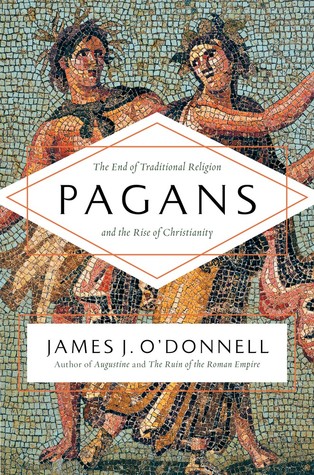
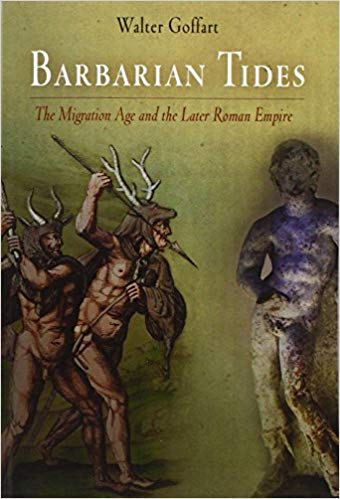
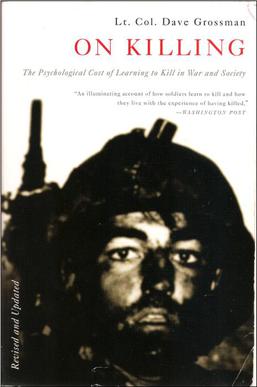
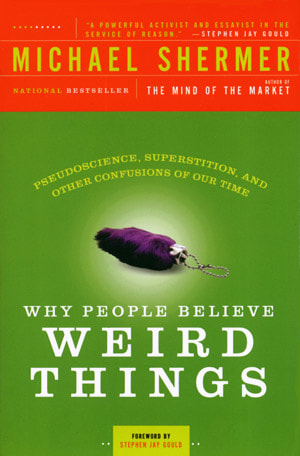
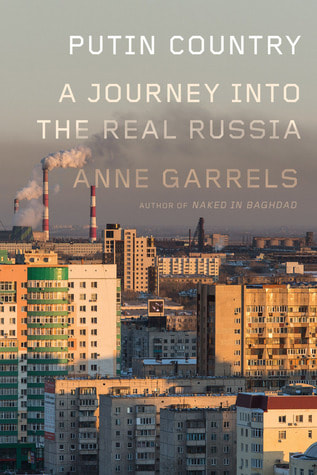


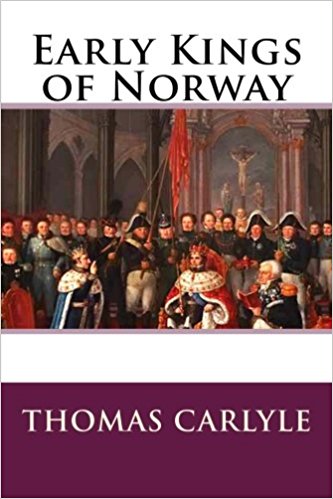
 RSS Feed
RSS Feed